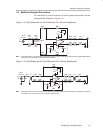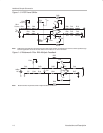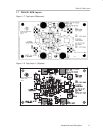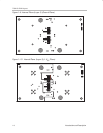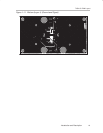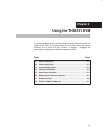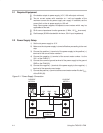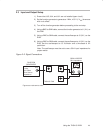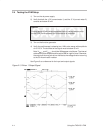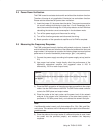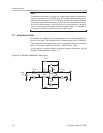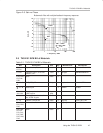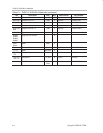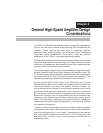
3-1
General High-Speed Amplifier Design Considerations
General High-Speed Amplifier Design
Considerations
The THS4151 EVM layout has been designed for use with high-speed signals
and can be used as an example when designing PCBs incorporating the
THS4151. Careful attention has been given to component selection,
grounding, power supply bypassing, and signal path layout. Disregarding
these basic design considerations could result in less than optimum
performance of the THS4151 high-speed operational amplifier.
Surface-mount components were selected because of the extremely low lead
inductance associated with this technology. This helps minimize both stray
inductance and capacitance. Also, because surface-mount components are
physically small, the layout can be very compact.
Tantalum power supply bypass capacitors at the power input pads help supply
currents needed for rapid, large signal changes at the amplifier output. The
0.1-µF power supply bypass capacitors were placed as close as possible to
the IC power input pins in order to minimize the return path impedance. This
improves high frequency bypassing and reduces harmonic distortion.
A proper ground plane on both sides of the PCB should be used with
high-speed circuit design. This provides low-inductive ground connections for
return current paths. In the area of the amplifier input pins, however, the
ground plane should be removed to minimize stray capacitance and reduce
ground plane noise coupling into these pins. This is especially important for
the inverting pin while the amplifier is operating in the noninverting mode.
Because the voltage at this pin swings directly with the noninverting input
voltage, any stray capacitance would allow currents to flow into the ground
plane. This could cause possible gain error and/or oscillation. Capacitance
variations at the amplifier input pin of greater than 1 pF can significantly affect
the response of the amplifier.
In general, it is best to keep signal lines as short and as straight as possible.
Incorporation of microstrip or stripline techniques is also recommended when
signal lines are greater than 1 inch in length. These traces must be designed
with a characteristic impedance of either 50 Ω or 75 Ω, as required by the
application. Such a signal line must also be properly terminated with an
appropriate resistor.
Chapter 3



